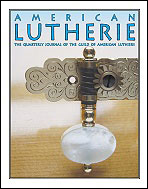 |
|
||||
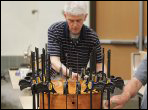 |
Steaming Hide Glue and Laminated Ribs by James Ham from his 2011 GAL Convention workshop Innovative double bass maker James Ham gives us a closer look at his method of activating hide glue with an inexpensive household steamer. No more racing to get the parts clamped before the glue sets. He also goes into detail about vacuum laminating sides with urea-formaldehyde glue. |
||||
 |
Meet the Makers: David and Rob Rodgers by Cyndy Burton with Jeffrey Elliott Meet the father-and-son team who make the world-famous tuning gears. They like to make other things, too, like fully-functional miniature-but-ridable steam trains which run on tracks in the garden. We take a surprisingly close look at the methods and machines that have produced so many fine tuners in an English cottage. |
||||
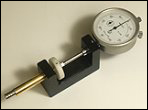 |
A Springless Magnetic Thickness Gauge by Mike Doolin A sudden international collaboration brings us a compact and accurate magnetic thickness guage with no spring. That's right, it works entirely with magnets. Build it yourself with easily-available parts. Mike Doolin developed this ingenious design by using Alain Bieber's essential insight that a magnet could replace a spring. You saw it first in American Lutherie magazine! |
||||
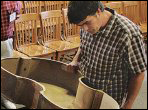 |
Plywood Bass Restoration, Part One by James Condino from his 2011 GAL Convention workshop Condino is “the bass guy” in North Carolina, an intensely musical region where old plywood basses get a lot of use, and a lot of respect. They are worth fixing right, and James shows us how to do it in this first part of a two-part series. |
||||
 |
Meet the Maker: R.M. Mottola by John Calkin The elusive RM Mottola. You know his byline from his years of work as a contributing editor for American Lutherie magazine. Now learn more about his life, his innovative work, and his easygoing philosophy in this entertaining interview. |
||||
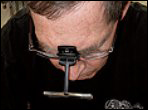 |
A Luthier's Vision by Rodney Stedall Stedall is an optometrist in his day job. He makes some valuable observations and recommendations about the use of corrective eyeglasses and magnifiers for the medium-close to very-close work that luthiers do. Don't scrimp. It's your eyes. |
||||
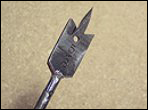 |
Cheapo Bridge Plate Repair by Roger Alan Skipper Skipper grabs a grinder and quickly repurposes a cheap spade bit to make maple inlays in a worn bridge plate. Before you can say “Sweet but expensive specialty tool,” he has put another old Martin back into service. |
||||
| Reviews by R.M. Mottola, Veronica Merryfield, and Melanie Heizer Mottola reviews the major new book “Contemporary Acoustic Guitar Design and Build” by Trevor Gore with Gerard Gilet and loves it. Bieber likes the Henny de Bruin instrument collection and website, and uses his review to make a point about the migration of necked lutes from East to West. And Merryfield and Heizer give the thumbs-up to “Electric Guitar and Electric Bass Design” by Leo Lospennato. |
|||||
 |
Product Reviews by Veronica Merryfield Merryfield takes a look at the KSM electric bass bridge and gives a generally positive report. |
||||
| Recent Research: Short Summaries of Recent Scientific Research Articles from the Savart Journal by R.M. Mottola Savart Journal is an open access online research journal for stringed musical instrument science and technology that is published in conjunction with the GAL. Editor Mottola takes a look at the articles that have been posted there and gives plain-English summaries. See the journal itself at http://savartjournal.org. |
|||||
 |
It Worked for Me by Michael Grossman, Mark French, Robert Sherman, and Harry Tomita Grossman uses decorative beads to anchor strings on a classical guitar bridge. French recommends foam earplugs to damp strings during testing. Sherman likes a baby bottle for dispensing single drops of water. Tomita makes a thickness sander drum from a piece of PVC water pipe. |
||||
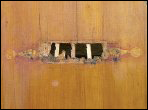 |
Questions edited by R.M. Mottola How can I improve my photos of abalone inlay? How much retouching should I do on an antique guitar restoration? What's the deal with wound classical guitar G strings? |
||||
Web Extras |
|||||
